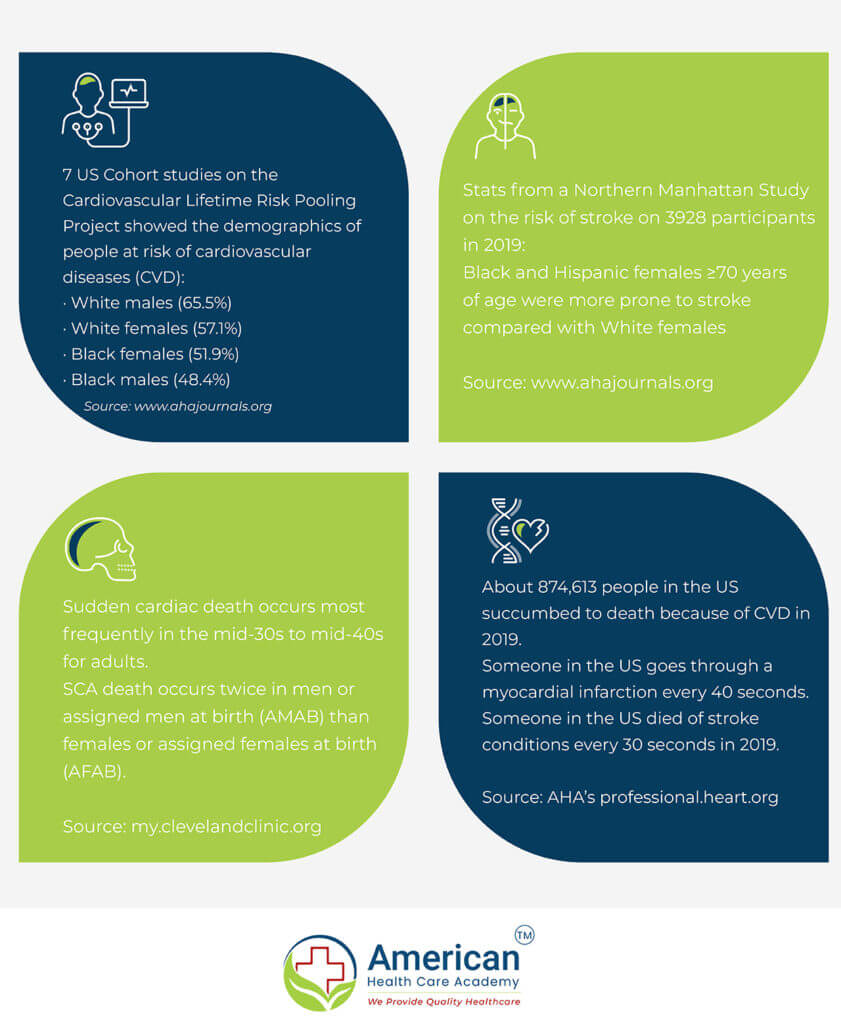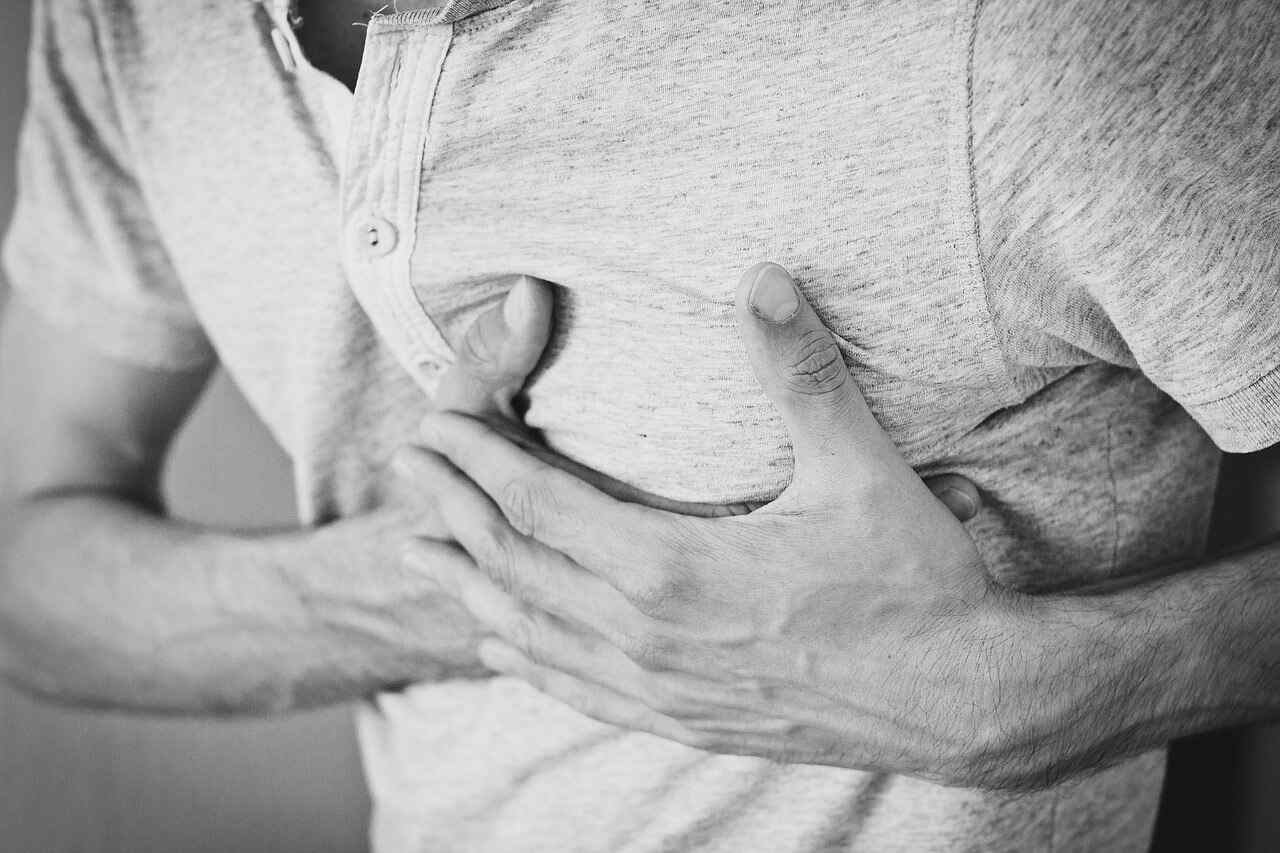Sudden cardiac arrest is the abrupt loss of heart function, breathing, and consciousness. This is caused by a malfunction of the electrical system in your heart. It disrupts your heart’s pumping action and stops blood flow to your body.
A heart attack is not the same as a sudden cardiac arrest. The difference between cardiac arrest and heart attack is that the latter occurs when the blood flow to a part of the heart gets blocked. Although, this can occasionally cause an electrical disturbance that results in sudden cardiac arrest. So, we recommend you read cardiac arrest causes in detail below for better understanding.
Common sudden cardiac arrest causes
Besides the failure of the heart’s electrical system, the following are the causes of sudden cardiac arrest:
Scarring of the heart tissue
It can be caused by a previous heart attack or another factor. A scarred or enlarged heart due to any reason is more likely to develop life-threatening ventricular arrhythmias. The first six months after a heart attack are a high-risk period for patients who experienced sudden cardiac arrest.
Cardiomyopathy
The thickening of heart muscles is called cardiomyopathy. High blood pressure, heart valve disease and other factors are responsible for heart muscle damage. A diseased heart muscle can increase your risk of sudden cardiac arrest, particularly if you also have heart failure.
Heart medications
Some heart medications can create conditions for arrhythmias that can cause sudden cardiac arrest under certain conditions. Significant changes in potassium and magnesium levels in the blood (due to diuretics, for example) can also cause cardiac arrest.
Using recreational drugs
Inappropriate use of drugs and substances for recreational purposes can lead to cardiac arrest even in healthy people.

Symptoms of a cardiac arrest
The following are the immediate and severe symptoms of a sudden cardiac arrest:
- Sudden collapse
- Loss of pulse
- No sign of breathing
- No consciousness
So, what are the 4 silent signs of a heart attack? here are some signs of cardiac arrests, such as:
- Gasping or shortness of breath
- Pain or discomfort in the chest
- Weakness
- Fainting or near fainting
- Rapid or irregular heartbeats
- Palpitations
- Feeling dizzy or lightheaded
Prevention of cardiac arrest situations
The following are the recommendations by experts that can prevent sudden cardiac arrest:
- Avoid smoking.
- Screening for a history of sudden cardiac deaths in the family.
- Those with a significant family history of sudden cardiac death or cardiomyopathy should get themselves screened for heart failures that make breathing difficult.
- Following medical therapy as directed by guidelines to prevent the occurrence of death by sudden cardiac arrest.
- Strongly recommending CPR and AED training to the family members of the patient with a heart condition.
How to help a sudden cardiac arrest patient?
Here’s how you can help someone who has suffered sudden cardiac arrest:
- Call 911 or emergency medical service (EMS) immediately if you have access to a phone.
- To begin the emergency treatment of cardiac arrest, check to see if the person is breathing. Begin CPR if the person is not breathing normally. Push down hard and quickly on the person’s chest at a rate of 100 – 120 compressions per minute. Check the person’s air passage and provide 2 rescue breaths after every 30 compressions only if you’ve been trained in CPR.
- If you haven’t done CPR training, simply keep doing chest compressions. Let the chest rise completely between the compressions. Continue doing so until a portable defibrillator is available or emergency personnel arrive.
- If a portable defibrillator is available, use it. It will speak step-by-step instructions to you. Continue compressions on the chest while the defibrillator is charging. When charged, the defibrillator will examine the person’s heart rhythm and, if necessary, recommend a shock. If the device recommends it, deliver one shock and immediately resume CPR, beginning with chest compressions, for about two minutes.
- Check the person’s heart rhythm with the defibrillator. If another shock is required, the defibrillator will deliver it. Repeat this cycle until the person regains consciousness.
Conclusion
Sudden cardiac arrest can be fatal if not treated immediately. With prompt and appropriate medical care, it’s possible to survive a cardiac arrest. Take the online CPR AED course from the American HealthCare Academy and save the lives of your loved ones.













